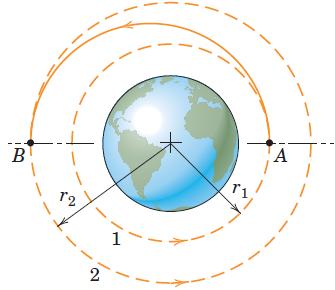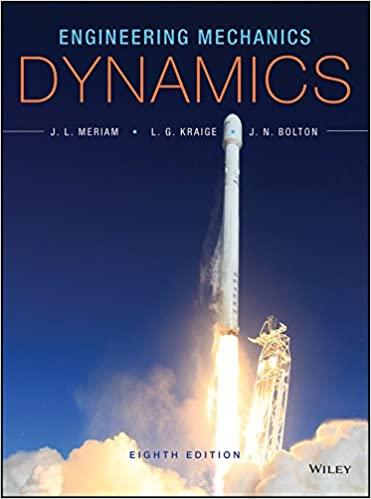A space vehicle moving in a circular orbit of radius r 1 transfers to a larger circular
Question:
A space vehicle moving in a circular orbit of radius r1 transfers to a larger circular orbit of radius r2 by means of an elliptical path between A and B. (This transfer path is known as the Hohmann transfer ellipse.) The transfer is accomplished by a burst of speed ΔvA at A and a second burst of speed ΔvB at B. Write expressions for ΔvA and ΔvB in terms of the radii shown and the value of g of the acceleration due to gravity at the earth’s surface. If each Δv is positive, how can the velocity for path 2 be less than the velocity for path 1? Compute each Δv if r1 = (6371 + 500) km and r2 = (6371 + 35 800) km. Note that r2 has been chosen as the radius of a geosynchronous orbit.

Step by Step Answer:

Engineering Mechanics Dynamics
ISBN: 9781118885840
8th Edition
Authors: James L. Meriam, L. G. Kraige, J. N. Bolton





